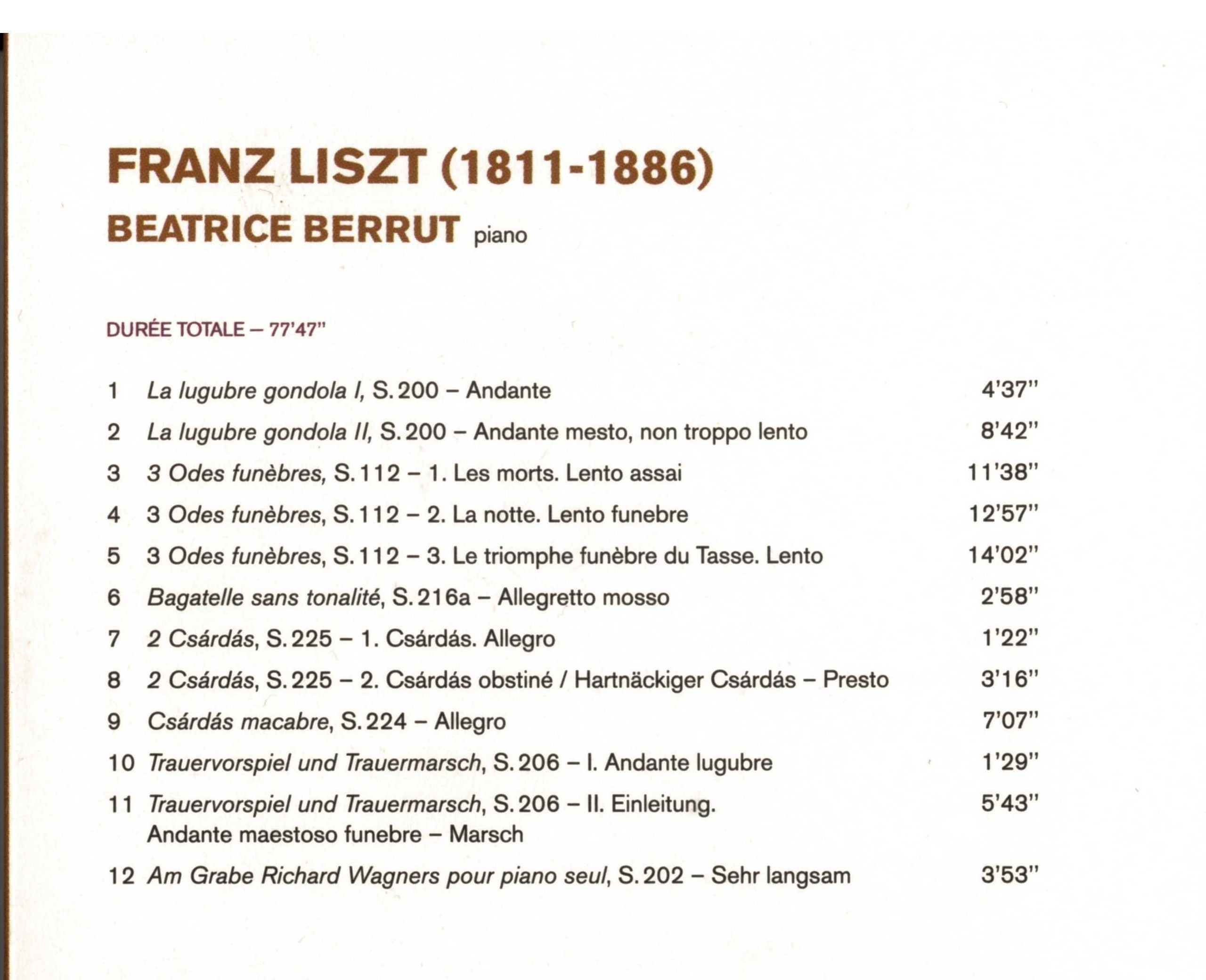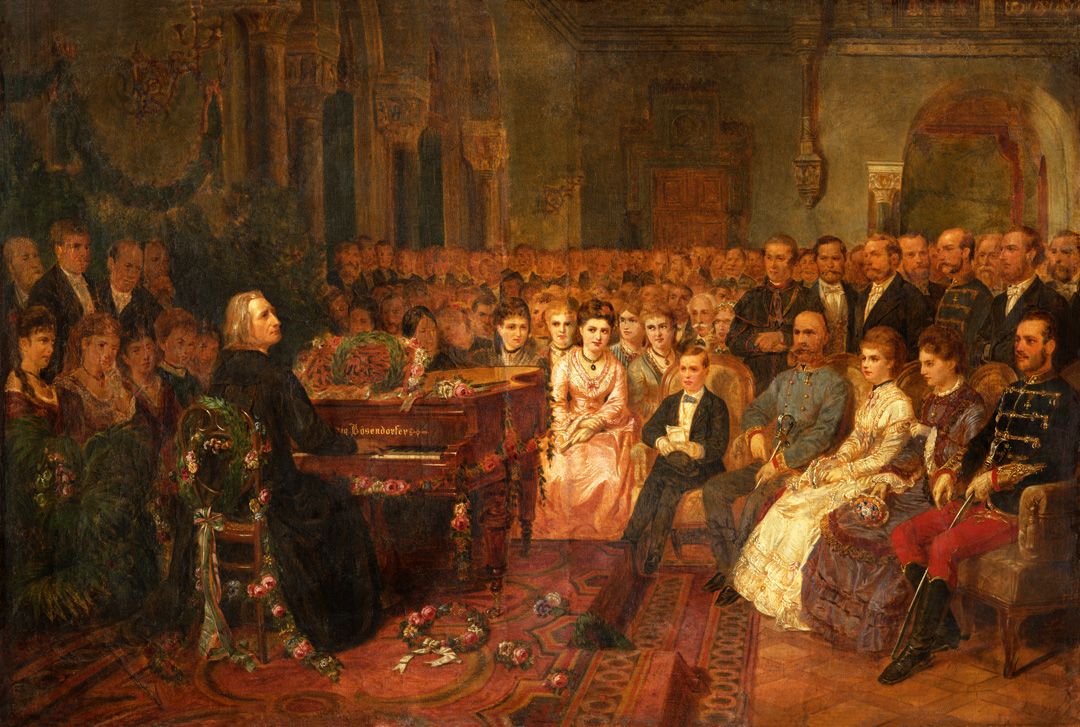Liszt
Beatrice Berrut's very internalized and expressive playing interweaves wonderfully with Franz Liszt's late work, which soberly and suggestively at the same time, opened the way to modernity.
Beatrice Berrut's very internalized and expressive playing interweaves wonderfully with Franz Liszt's late work, which soberly and suggestively at the same time, opened the way to modernity.
The Swiss pianist Beatrice Berrut has forged herself a solid reputation as a Lisztian, as these lines from the newspaper Le Monde attest: " The programm is a compendium of the Lisztian galaxy and the pianist is an embodiment of the main figures of Olympus. From Diana the Hountress who misses no expressive target with her Bösendorfer bow to the elusive Mercury who rises from her virtuoso fingers."
In her new album, the young pianist dedicates herself to the late works of the Hungarian composer. These works, composed by F. Liszt at the end of his life, are deeply moving because of their sober, clear style and the complete absence of apotheosis.
Liszt reveals a retrospective of both his life and his favourite instrument, the piano, by composing music that is alternately austere with a deep nostalgia or a wonderful tenderness that springs from a vein now free of any struggle, show or even redemption.
The wind dropped as I approached the tomb and I was no longer cold. I was gripped with indescribable emotion. Franz Liszt was buried there. I was close to him and I wanted to tell him that his music is my Grail and gives a sense to my life. I could not leave his side. I wanted to speak to him to ask him if he had found the God in whom he had such faith...
(Beatrice Berrut)


Source: Printemps des Arts de Monte-Carlo